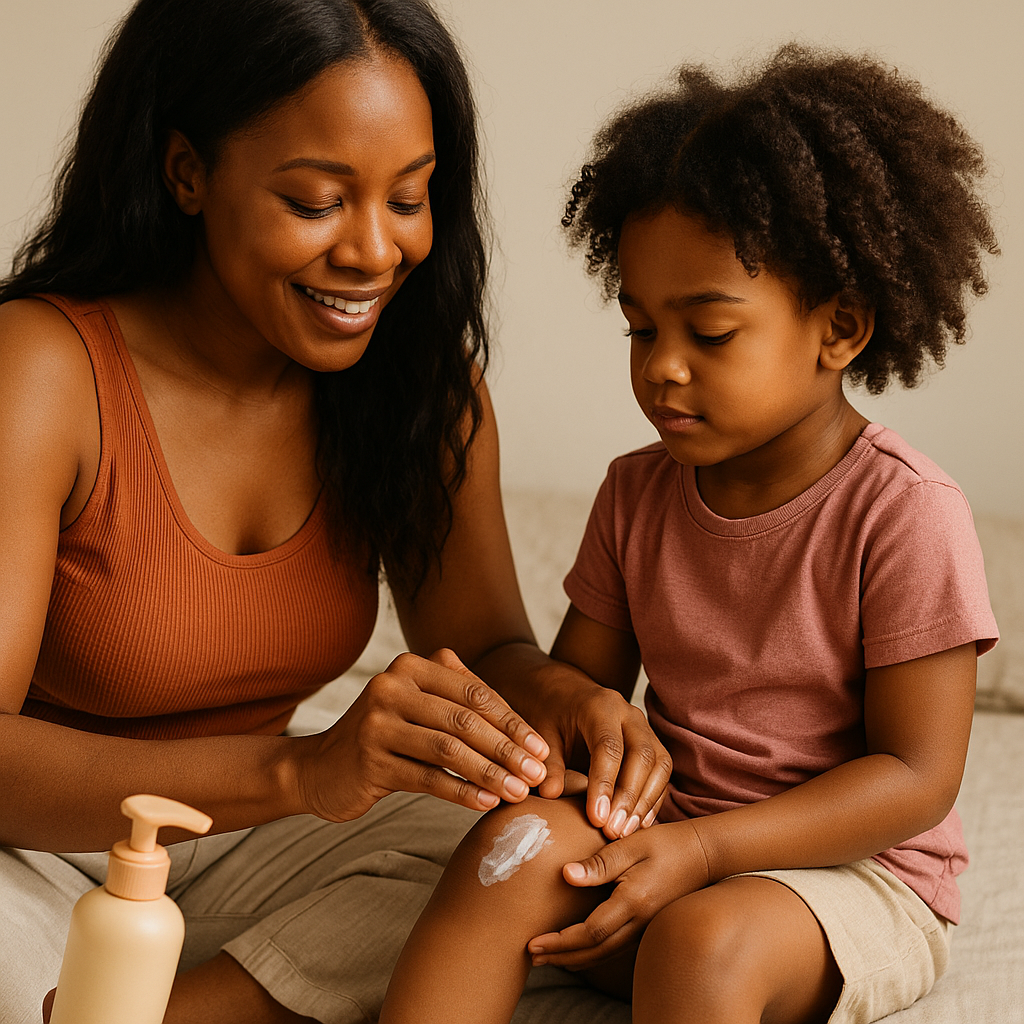
A Love Letter to Our Skin: The Ritual Passed Down in Black Homes
Share
When our son was a baby, his pediatrician always said, “His skin is so soft.”
And I’d smile—but also wonder, a little quizzically, what do other babies’ skin feel like?
The truth? It wasn’t anything fancy. It was what I knew.
Like so many of us, I grew up being taught: after the bath, you moisturize immediately. You don’t wait. You seal it in while the skin is still damp.
And I didn’t hold back. My husband used to joke our son looked like a “buttered biscuit” or that he was afraid to pick him up—he might slip right through his hands.
But that’s how we cared for skin in our family. That’s how so many Black families do.
As babies, we were moisturized daily by the hands of our mothers, grandmothers, aunties—wrapped in love and cocoa butter. As teenagers, we kept the ritual going ourselves.
And as kids, we knew better than to walk out the house ashy. Dry knees? That was a quick call back inside to whip out the lotion and do it right.
The Anatomy of a Ritual
This wasn’t just a morning routine. It was culture. It was protection. It was pride.
And whether we realized it or not, we were participating in something much older than us.
The African Roots of Our Daily Skincare
This deep care for skin—especially dry skin—didn’t start in American households. It started across the African continent, passed down through generations and carried with us across time, geography, and unimaginable history.
- Shea butter, often called “women’s gold” across Africa, has been handcrafted for thousands of years. Used daily to protect skin from harsh sun, wind, and water, it was also part of massage, healing, even spiritual rituals.
- In West, Central, and North African cultures, natural oils like baobab, marula, and moringa were used not just for moisture, but to honor the body—especially during rites of passage, motherhood, and healing.
- In the Black American experience, this tradition survived—despite everything. Ashy skin wasn’t just uncomfortable; it was seen as a sign that you weren’t being properly cared for. Moisturizing was a way to show up in the world with dignity, no matter your circumstances.
From Our Ancestors to My Grandmother’s Bathroom
That ritual made its way from our ancestors’ hands to the humble bathrooms where many of us first learned how to care for our skin.
It’s what I knew growing up. It’s what I carried into motherhood. And eventually, it became the soul of Violet Botanical Skincare.
I didn’t start this brand to chase a clean beauty trend. I started it because I was trying to care for my family’s dry, sensitive, eczema-prone skin—just like my elders did. I needed something gentle, plant-based, and rooted in wisdom I could trust.
So I turned to what has always worked: African botanicals and time-honored care.
Everyday Products. Sacred Intentions.
- Nilotica Shea Butter: rich in oleic acid and softer than West African shea. Deeply hydrating and ideal for sensitive skin.
- Marula & Baobab Oils: antioxidant-rich, fast-absorbing, and full of essential fatty acids to seal in moisture without clogging pores.
- Castile-based Body Wash: gentle, biodegradable, and infused with nourishing oils to cleanse without stripping.
These aren’t just products. They’re a way to remember—to care for your skin in the same spirit your grandmother once cared for yours.
Why This Ritual Still Matters
We moisturize not just to avoid dryness—but to stay connected. To carry forward pride, dignity, and belonging. To honor the bodies we live in and the people who taught us how to care for them.
This isn’t just skincare. It’s legacy care.
Final Thought
Every time you smooth on oil or butter, you’re doing more than sealing in moisture—you’re continuing a ritual that has loved us, protected us, and reminded us of who we are.
If this spoke to you, share it with someone you love. And if you’re ready to return to that kind of care, you’ll find what you need here.
